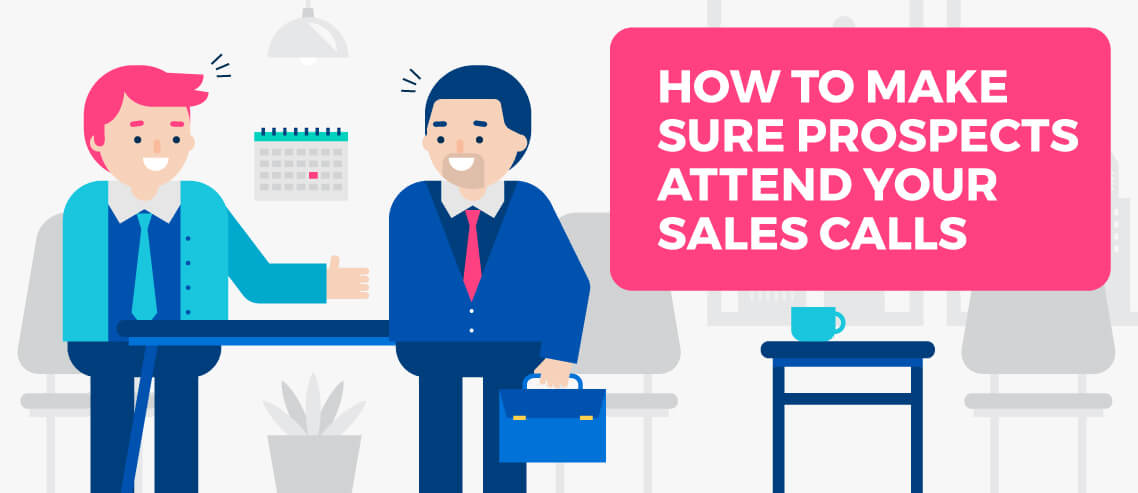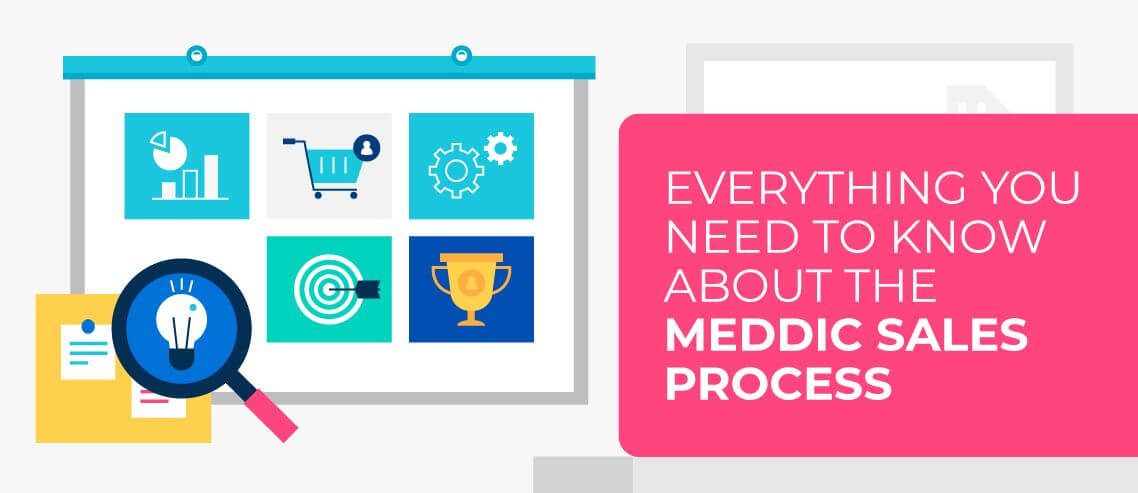How to Make Sure Prospects Attend Your Sales Calls

Contents
You’ve connected with a prospect. You’ve booked a time on your calendar for a sales call. And then, on the day of the call, nothing. Crickets. Radio silence where you’d hoped for a promising conversation.
What gives?
Every salesperson in every industry has faced the dreaded no-show. But while you can’t avoid them entirely, you can minimize the number of times they happen to you by proactively mitigating the reasons prospects bail with some simple steps taken before the call.
Why Prospects Bail
According to Salesbuzz, there are three common reasons prospects bail on your sales calls:
- They don’t see the need or reason to meet, or to have a sales call with you. They don’t see the “WHAT’S IN IT FOR THEM.”
- Something legitimate came up and they had a scheduling conflict.
- They forgot.
I’d add that there’s a fourth reason – that they’ve already gone with a competitor by the time your sales call rolls around. In any case, knowing these four possibilities makes it possible to put a plan of action in place to avoid wasting your time on no-show prospects.
Before the Meeting
The odds that your prospect will show up for your sales call aren’t arbitrary. In fact, the steps you take leading up to the call and the way you handle your advance preparations can have a huge impact on the likelihood that your call will happen as scheduled.
One of the most important things you can do before your calls is to make sure the prospects you’re talking to are well qualified, as attendees who aren’t well qualified may be more likely to skip out on you if they aren’t confident the product or service you’re selling will be a good fit. Any effort you make to ensure you’re talking to the right people in the first place will go a long way towards minimizing no-shows.
Other steps you can take before the meeting include:
- Inviting your prospect to include others on the call – Not only does having multiple attendees make it more likely you’ll get at least one person to show up, this also increases the odds you’ll get the decision maker on the line.
- Send a calendar invite – Putting it on your prospect’s calendar for them ensures they won’t forget to pencil you in. Just be sure to double check the date and time before sending, especially if you’re dealing with different time zones. Mistakes happen, and it’s not a good look to ghost your prospect inadvertently.
- Get the prospect’s phone number, if you don’t have it already – Even if you’ll be using a conference line or videoconference service, having their phone number handy gives you another channel to reach out on if they bail.
- Include a backup communications channel on your meeting invite – Even if you plan to meet over Zoom or some other digital channel, include your phone number and make prospects aware of it so that they can call you at the appointed time if their internet is down or your conference service isn’t working.
Set Up an Automated Meeting Reminder Sequence
In addition to taking the steps described above, put together an automated meeting reminder sequence that confirms they’re still looking for your product or service, checks that the date and time you’ve set still works and shares advance sales messaging so that they remember what they hoped to get out of the call.
At a minimum, use a message like the template below that confirms the date and time. Send this message at least 6-8 hours before your call (ideally, on the morning of your meeting) so that you can catch any late-breaking schedule changes on your prospect’s end.
Hi [prospect’s name],
Looking forward to our call on [date] at [time]. Can’t wait to show you how [our company] offers [benefit] that can help you [solve problem].
If that time no longer works for you, please let me know, and I’ll be happy to reschedule.
Sincerely,
[your signature]
For even better results, configure an automated sequence in Mailshake that connects with your prospect multiple times in advance of your call. The following three templates can be used in combination with the reminder prompt above. Pick from these options to create a cadence that’s appropriate to your sales workflow and customize the messages as needed to suit your brand and style.
Share a Helpful Content Piece
Hi [prospect’s name],
Looking forward to our call on [date] at [time]. In the meantime, I thought you might be interested in the following [type of content piece]. I think it might give you some interesting insight on [a pain point they mentioned].
[link to content piece]
Hope you enjoy,
[your signature]
You don’t have to have your own blog posts, web articles, ebooks or other types of content for this template to work. Even something pulled from outside your organization that speaks to the needs expressed by your prospect will work here.
Ask About Questions
Hi [prospect’s name],
Just a reminder that we have time set aside on [date] at [time] to discuss [our product or service]. Is there anything you’d like me to know in advance? Please send me any questions you have so I can be sure to touch on them in our call.
Thank you,
[your signature]
If your prospect has specific questions in mind, collecting them in advance allows you to tailor your presentation to their needs. Even if they don’t, this template provides another reminder of the date and time they’ve set with you.
Let Them Know You’re Logging On
Hi [prospect’s name],
I’m firing up [Zoom/the conference line/etc] now! I’m excited to show you how [our product or service] can help with [the pain point they’ve mentioned].
If this time no longer works, could you please let me know a better option for rescheduling it?
Cheers,
[your signature]
Providing an in-the-moment update eliminates the potential excuse that your prospect “forgot” your meeting, while also subtly setting the expectation that their presence is expected.
After a Skipped Meeting
Unfortunately, there’s no way to guarantee that every meeting you schedule will take place as planned. In addition to having a plan in place for pre-meeting engagement, plan a follow-up sequence that’ll help you reconnect with as many lapsed prospects as possible.
As above, this process can be automated so that updating a prospect’s CRM record with a no-show meeting note triggers a predefined follow-up message. Hubspot has a great template for this that draws on the content-sharing strategy used above:
Hi [Prospect],
I rang (XXX) XXX-XXXX at 3 p.m. today and it went straight to voicemail. I planned to cover Y and Z during today’s call, so I wanted to send over a couple pieces of information to catch you up. Take a look and let me know what questions you have!
- Link or file to piece #1
- Link or file to piece #2
Would you be interested in scheduling another call? I have a [link to meetings app] that should make it easy to select an open time.
Best,
[Your name]
Don’t limit yourself to one message. If you really feel the prospect still has promise, add 2-3 further messages to your no-show follow-up sequence. This can be a great opportunity to learn about your prospect’s objections indirectly by including language that rebuts each potential objection in subsequent messages to see which prompt engagement.
For example, if you know that the three main objections to your product are price point, missing features and degree of difficulty to use, you could create a cadence with messages that make the following points:
- Message #1 could include a comparison of how you stack up to others in your industry, price-wise. It could also include the language you use in sales calls to defend your pricing.
- Message #2 could focus on the value of the features you do have, or demonstrate how your users solve the same problems as users of other products – even in the absence of the same features.
- Message #3 could show prospects the features your company has put in place to get new users up to speed quickly, including free training sessions, tutorial videos or an extensive knowledge base.
If a prospect responded to Message #2, but not Message #1, that could give you powerful insight into their pain points and objections.
Having said all of that, you can’t win back every no-show. Simplifying the follow-up process with an email automation tool like Mailshake ensures that you won’t spend too much time chasing down prospects who are no longer likely to convert – but at a certain point, you’ll have to pull the trigger on when to hold ‘em and when to fold ‘em.





